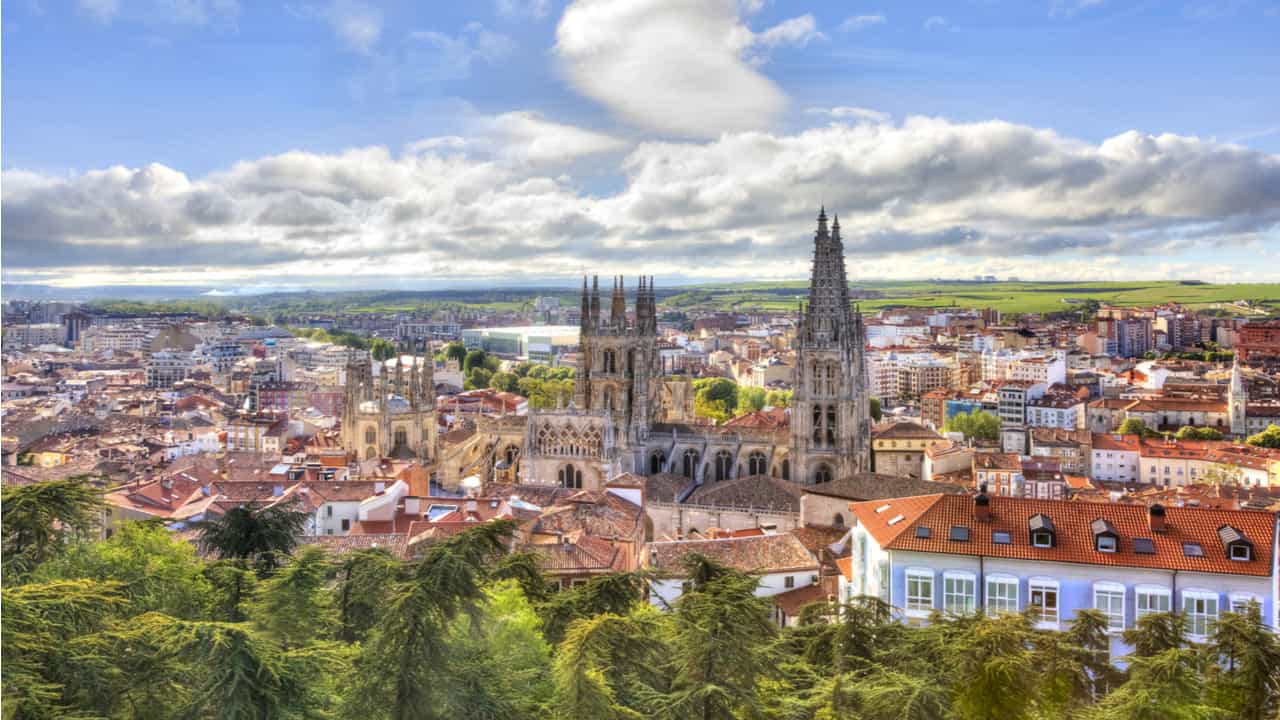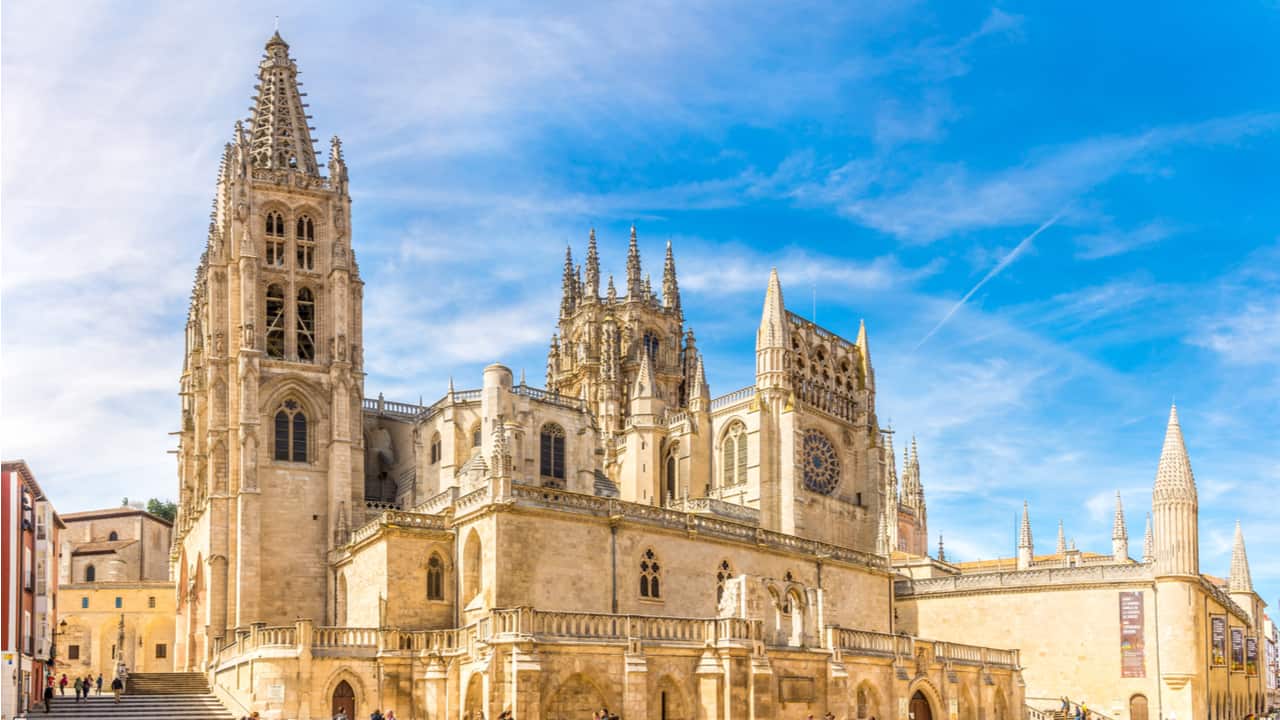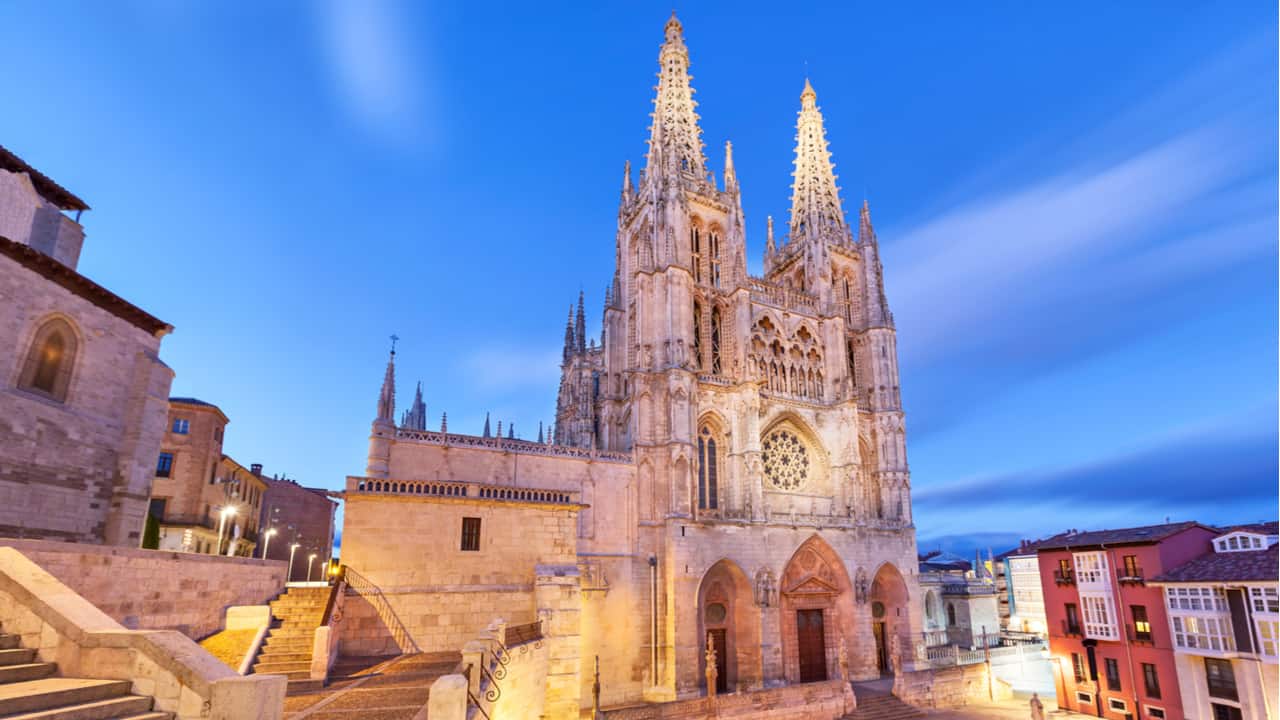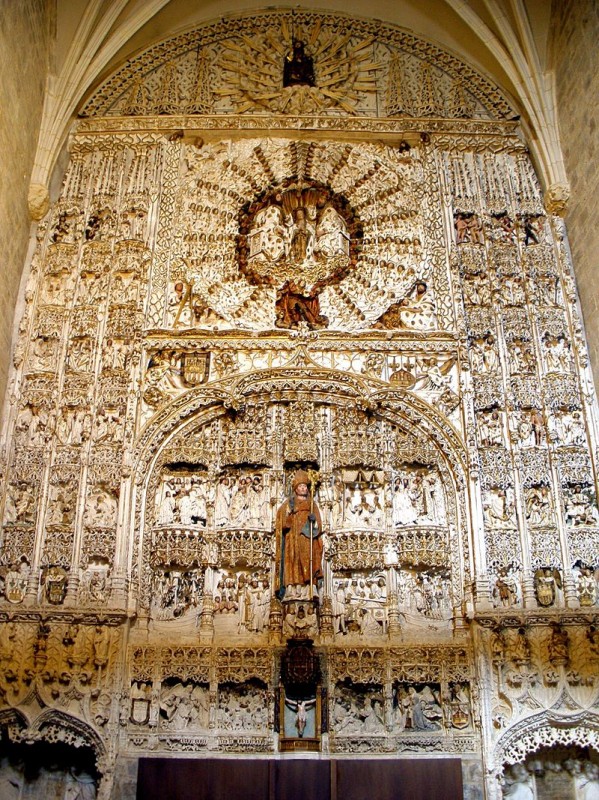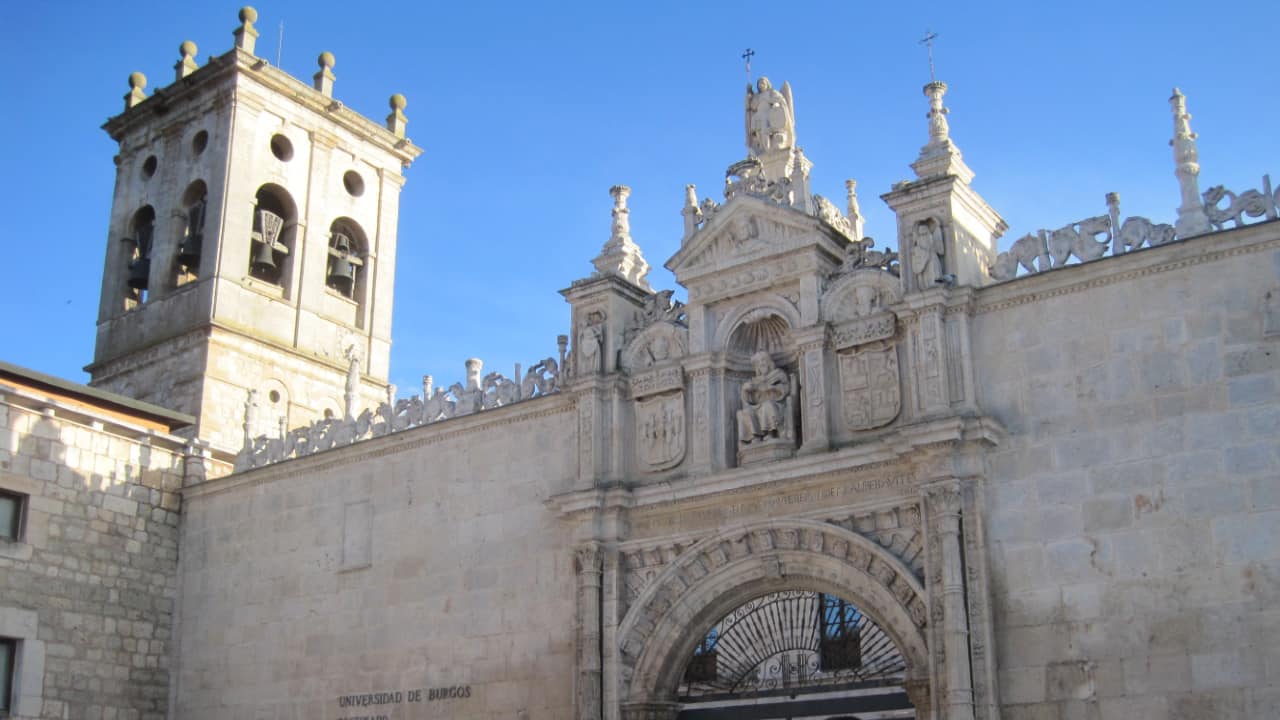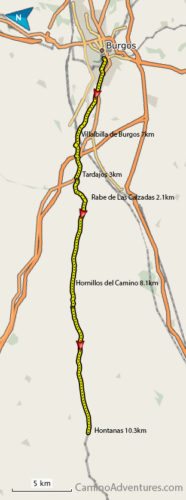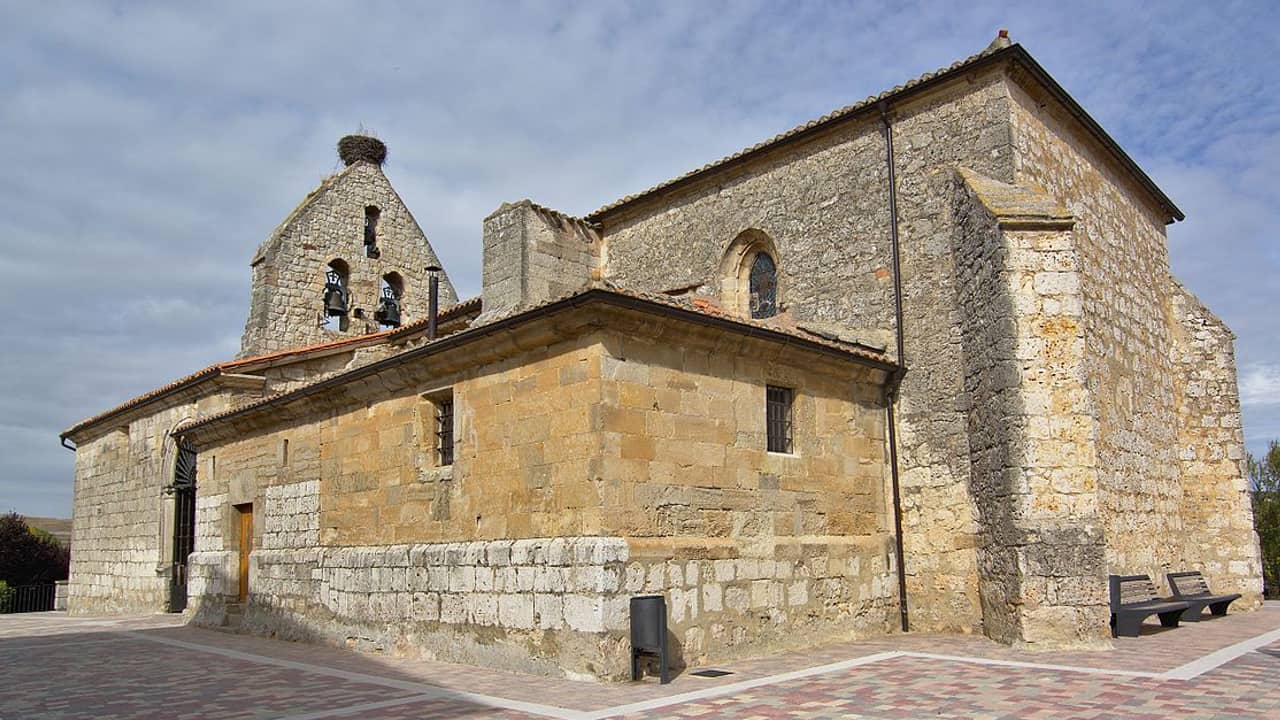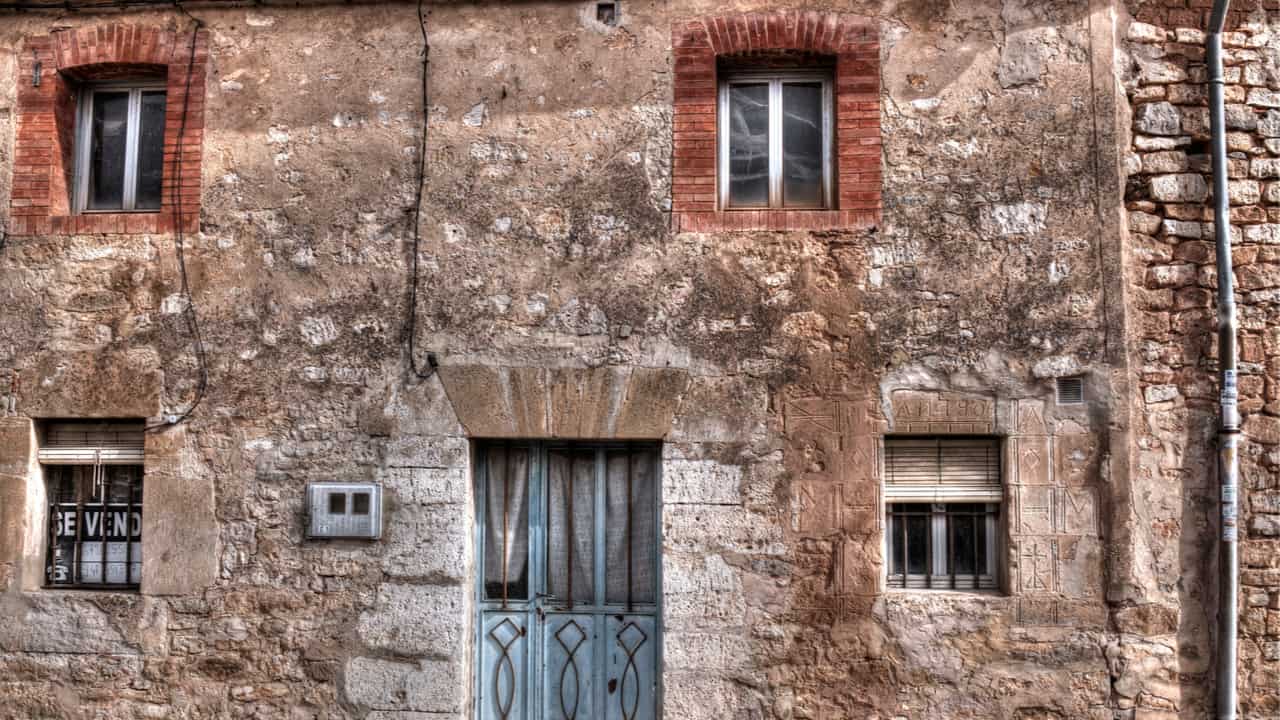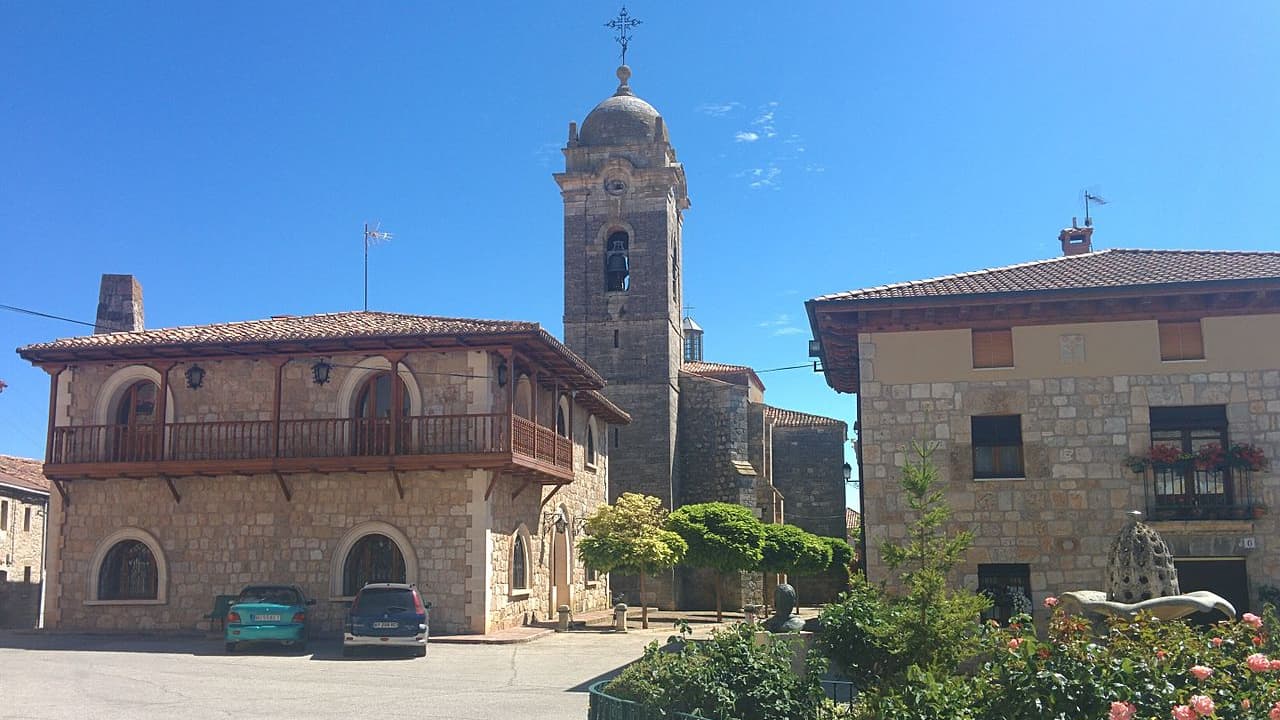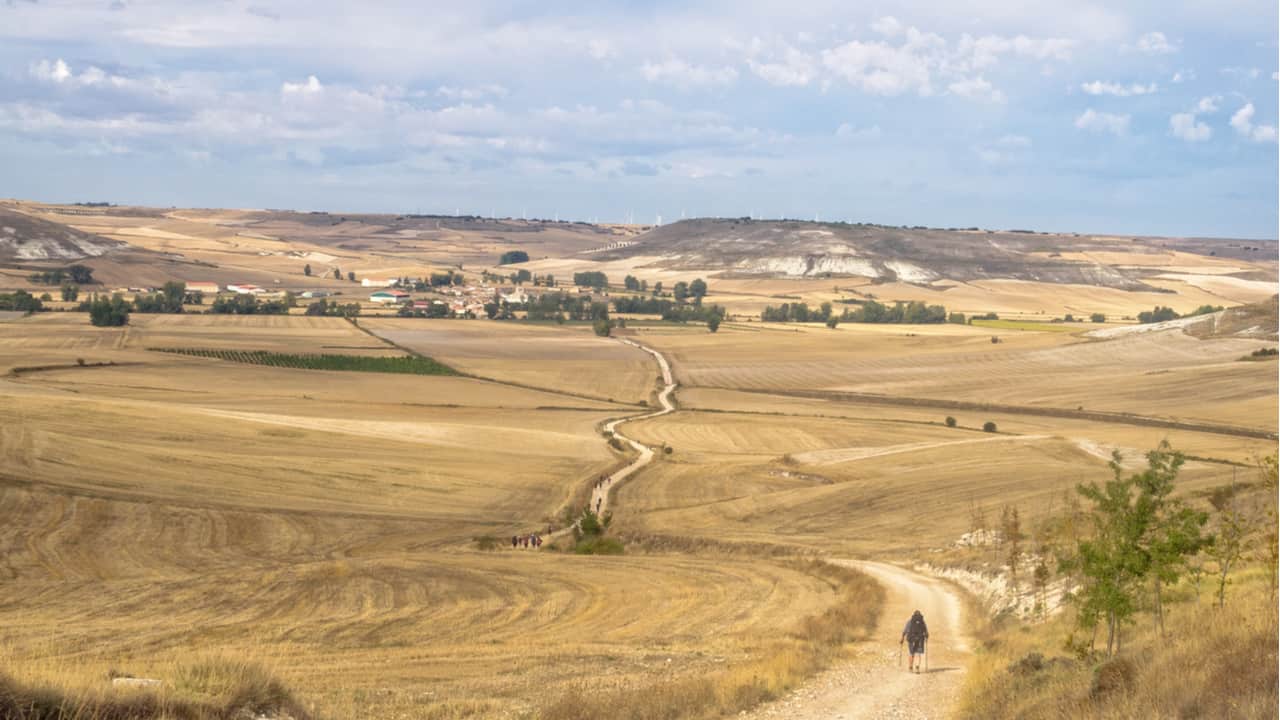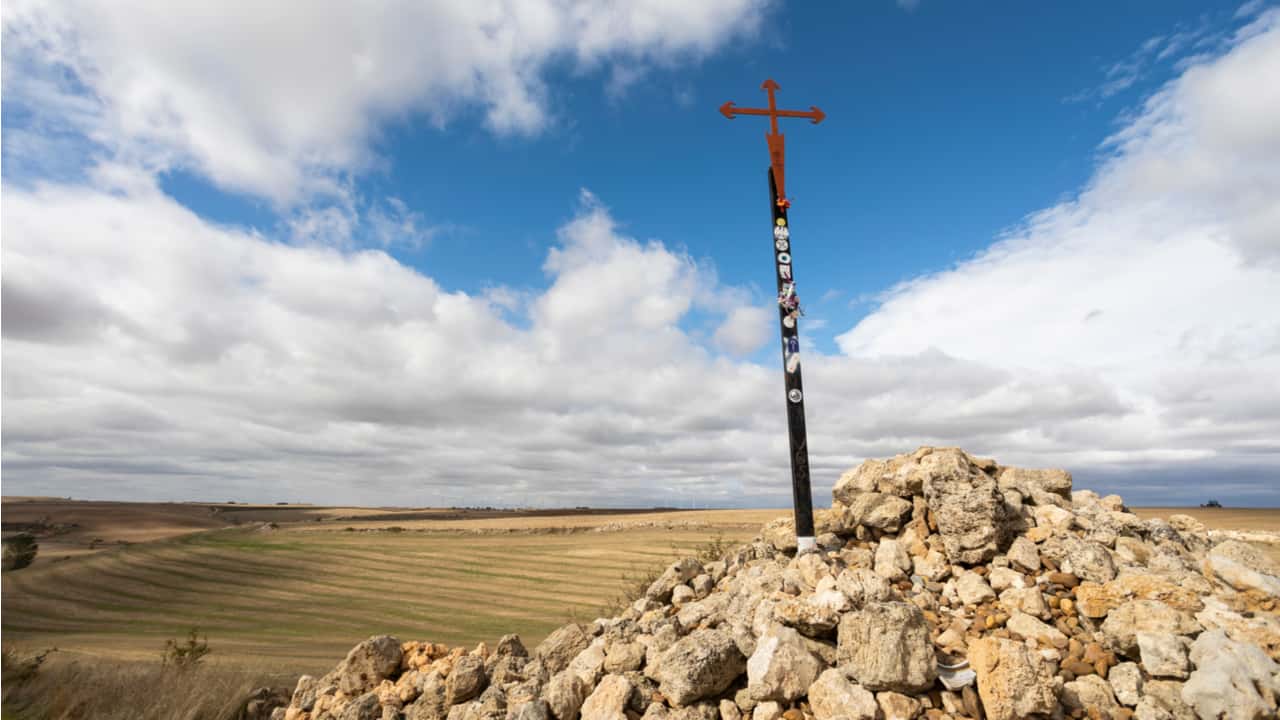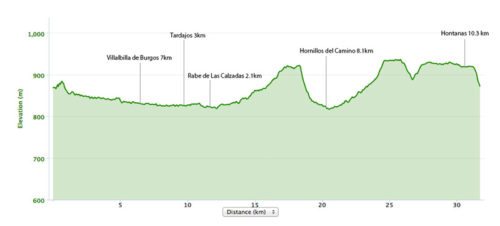Burgos was founded in 884 by Count Diego Rodriguez Porcelos and now has a population of approx 200,000. The city was the seat of Franco’s government until 1938.
It was home to the notorious El Cid, and is a city brimming with majestic architecture. The week before and after 29th June is the city’s main festival of San Pedro y Pablo, during this time non-pilgrim accommodation can be difficult and expensive to book. At other times of the year it is the perfect place for a rest day if you love architecture and history.
There is some evidence of a Roman fort in Burgos, however, the area appears to be of little importance to the Moors and was not fortified again until during the 9th century when Alfonso III built another fort over the Roman ruins.
Burgos was the capital of the new county of Castilla which seceded from Leon and appointed two judges, Nuno Rasura and Lain Calvo, to rule over the area and protect it from Leon and the Moors.
As was common at this time, the small state found it difficult to protect itself and was fought over by Leon, Navarre, and Aragon, eventually being ruled by Sancho el Mayor of Navarra, known as Sancho the Great, he was the King of Pamplona.
On his death, Burgos and Castella were left to Fernando I el Magno, who is believed to be the founder of the Monarchy in Spain and the first Christian ruler to administer over the whole of Northern Spain.
Unfortunately on his death he split his kingdom between his three sons, and gave the city of Zamora to his daughter. Sancho, the ruler of Castella, went to war with Alfonso VI of Leon and his sister Urraca.
This eventually led to Sancho’s assassination in Zamora, after he had conquered Leon and Zamora and deposed his brother and sister. Alfonso became king as the direct heir to Sancho.
Rodrigo Díaz de Vivar, El Cid, born in Castella just north of Burgos served as the military commander for Sancho. He had driven the sister and brothers of Sancho from their thrones helping Sancho enlarge his kingdom. When Sancho was murdered El Cid forced Alfonso to swear in Burgos Cathedral that he had nothing to do with the assassination.
After this El Cid continued to command his army on behalf of Alfonso but was held in suspicion, obviously not trusted, and eventually exiled. El Cid can be seen as the people’s champion, having little regard for fighting on behalf of religion and commanding armies that included Christians and Muslims fighting together.
He can also be viewed as a mercenary as he was prepared to fight on behalf of Christian or Muslim Kings at various times. However, it is thought that since the death of Sanchos he held his own desired to rule and achieved this in administering Valencia, a mixed religion city, officially in the name of Alfonso; in reality, El Cid was independent.
There are various statues of El Cid in Burgos, the most famous one is a five-minute walk along the river east from the cathedral at Plaza Mio Cid.
As with all places the fortunes of Burgos rose and fell at the whims of Kings and wars. With the founding of the cathedral in 1221 the city’s fortunes soared as it became the commercial center of Spain.
Columbus was received here in 1497 after his second voyage by Queen Isabel. The declined of Burgus began in 1560 when Madrid became the capital of Spain. The Napoleonic Wars from 1808 to 1813 destroyed the castle; then Franco made Burgos his operations center in the civil war from 1936 to 1939.
If you only visit one place in Burgos, make it the Cathedral. It is the best example along the Camino of medieval genres and art styles. If you take your Pilgrim’s Passport you can avail of the 50% discount entrance fee for pilgrims.
It is surprising that the Gothic style of Burgos Cathedral is coherent, as it was constructed over a period of three hundred years. The cathedral was founded by Fernando III on 20th July 1221 and was not consecrated until 1260.
However, the first mass was celebrated in 1230, mainly due to the fundraising and building management of Bishop Mauricio. The bishop died in 1238 before even the ceilings were closed, but the style of the building was his vision which lived on.
West Facade: the three portals in the facade are late 17th century, and have been described as mutilation of the building, this though did not affect the story and impression the facade communicated.
The eight kings in the middle arcade reminded people of the link between royalty and divine power. However directly above the kings arcade is the statue of the Virgin, by Juan de Colonia, illustrating how even the monarchy were inferior to the church.
The central door was for royalty when they entered in a procession. The four statues level with the top of the door are of Bishop Asterio, Bishop Asterio, Alfonso VI, and Fernando III.
South Facade: this is the main tourist entrance. The statue between the door is Bishop Mauricio, above are the 12 Apostles, with Christ in Majesty presiding over all, surrounded by scribes passing on the word of God.
The north portal again has Christ in Majesty, this time being beseeched by the Virgin and St John interceding for humanity. This theme continues with images of divine judgment, the weighing of souls, and sinners being punished.
The interior of the cathedral is massive and the layout map paid for by your entrance fee will be helpful. The cruciform floor plan, the shape of a crucifix, is 106 meters long. The three naves are separated by massive columns and are surrounded by fifteen chapels, the cloisters, and the Bishop’s Palace.
You could easily spend a day exploring the inside of the cathedral. The main altar retablo, dates from 1562, is Renaissance and narrates the life of the Virgin.
The tomb of El Cid and his wife are in the transept after being re-interred in 1921 for a second time. The choir is 16th century with Renaissance lateral stalls. At the end of the stalls is the bishop’s throne, and in the center of the choir is the 13th-century tomb of Bishop Mauricio.
The Church of San Nicolas de Bari was built in the 15th century on the site of a previous church. Whereas Burgos Cathedral belonged to the Church and Monarchy, the Church of San Nicolas de Bari was the church for merchants, they contributed to the building of it and the lavish interior. This is most noticeable in the adornment of the altar, where St Nicholas is the central effigy surrounded by scenes from his own life.
The Hospital del Rey, founded in 1195 by Alfonso VIII, is now the Faculty of Law. It was the main hospice for pilgrims in Burgos and had specific legislation for the hospitality of pilgrims: all pilgrims who pass by on the French Road and other roads, whatever their origin, no one shall be refused there… at all hours of the day and night…. any man or woman who arrives sick shall be provided men and women to take care of them.
Interestingly there was an age requirement for the official staff of thirty years for men, and thirty-five for women. There is limited access to the entrance area on the left to what was once the church.
Burgos castle has seen some restoration during the 20th century, but little remains except for the walls. It is however a great place to view and take photographs of Burgos and the cathedral and therefore worth the ten or fifteen-minute walk from the cathedral.
These are some of the other sights of interest in Burgos:
- Monastery of Las Huelgas – building started 1175, guided tours only. The aim of the convent was a refuge for windowed nobility.
- Cartuja de Miraflores – built for the tombs of royalty in 1454, however the royal court moved first to Granada and then Madrid.
- Arco de Santa Maria – the main gate into the city during the 14th century.
- Casa del Cordon – palace built in the 15th century.
- Casa de Miranda and Archaeological Museum – built in 1545 as a palace, now used as a museum and medieval art museum.
Today’s Walk: 30.5 km (19 mi)
If you have stayed overnight in the albergue beside the cathedral it is easier to walk along the river and join the Camino at Puente de Malatos. Stay on the north side of the river, where there is a walking and cycle path, until the bridge.
Otherwise pick up the Camino scallop shell signs at Calle Fernán González, then Calle del Emperador, then Calle Villalon will lead you to the bridge.
Today is a long day, and the first day on the Meseta, however stopping at Hontanas is an option. There is very little shade on the Meseta, and it can be very hot in the summer, however most of the day is along earthen tracks.
Many pilgrims with less time decide to miss this part of the Camino. However, it is very peaceful with wide open spaces; the Meseta is very different from my normal walking routes in Ireland and because of this I loved this section.
It is six days to Leon the next major city, if you need particular supplies e.g. contact lens cleaner it is best to purchase in Burgos before you leave, the villages are fairly small and rural for the next six days.
Unlike the slog into Burgos, the walkout is beautiful and calm. There are two steep climbs and descents part way through the day right after each other from Rabe de las Calzadas. Most of the walking today is gravel and earth farm tracks.
Today there are two long stretches without guaranteed water. From Rabe de las Calzadas to Hornillos, a distance of 8 km (5 mi), where there are no villages and no water fountains. Between Hornillos to Hontanas, (10 km. 6 mi), there is an albergue at San Bol, after 5 km (3 mi). Carry plenty of water.
Villalbilla de Burgos
7 km (4.3 mi), water, cafe
Villalbilla is a small suburb of Burgos with just over 1,200 inhabitants. For the historically minded there is little to hold you here and perhaps the most interesting sight will be the stork’s nest atop the Church of Asuncion. The Camino skirts the edge of Villalbilla and if you need facilities or water walk off the Camino into the village.
After Villalbilla the route now passes under the motorway, keep following the yellow arrows.
Tardajos
3 km (1.8 mi), water, cafe, bar, pharmacy, food shop
At the entrance to the village, and former important Roman town and cross road, you are greeted by a 18th century stone cross. Excavations in the area have turned up Roman coins and ceramics. Just over the river on the right are some Roman ruins.
Of the three churches that were here in the 13th century only one remains. The Gothic Monastery Church of Santa Maria was built in the 13th century, but most of its current construction dates from the 16th century.
Inside there are five Baroque retablos, the central retablo contains an image of the Virgen de las Aguas who was venerated in the past by farmers praying for rain. The French influence can be seen again with an image of San Roque on the left retablo, who is often mistaken for Saint James as they are both often portrayed as pilgrims.
Pilgrims of 800 years ago had to find a way over swamp between Tardajos and Rabe, it was so well known that the following ditty evolved:
From Tardajos to Rabe
may God deliver us.
And from Rabe to Tardajos,
you will not lack for troubles.
Rabe de las Calzadas
2.1 km (1.3 mi), water, cafe
Fill your water bottle before leaving Rabe as there is no guaranteed clean water for the next 8 km (5 mi). About 2.5 km (1.5 mi) past Rabe de las Calzadas there is a picnic area with water provide via a hand pump. There is no sign informing if the water is drinkable or not.
The village Church of Saint Marina has a 13th-century portal, inside there is a small Romanesque relief of the Crucifixion. On the way out of the village you pass the reconstructed Hermitage de Nuestra Señora de Monasterio.
Hornillos del Camino
8.1 km (5 mi), water, shop, bar
Hornillos has one main street, Calle Real, and only 66 inhabitants which makes it quite typical of many small villages on the Meseta.
The Gothic Parish of San Roman can’t be missed as it is only twenty meters from the bar where most pilgrims will stop for refreshments. The church was built on a pre-Roman castro, (fortified settlement), and resembles a fortified church; however, most of the building is recent due to complete renovations.
San Bol
5 km (3.1 mi), it may be possible to buy some snacks and water during the summer months between April and Oct
San Bol is an albergue in the middle of nowhere. When I first stayed, in 2004, there were no toilets, no showers, no electricity, and no running drinkable water.
However the albergue changed hands in 2010 and has been revamped; there is now running water, one shower and one toilet. In some English guide books there is a legend about San Bol.
They say if you bath your feet in the water here you will have no more blisters and will reach Santiago de Compostela; I reached Santiago, however, I still developed a few blisters later – so half true.
About two 2 km (1.2 mi) before Hontanas you walk through a landscape characterized by piles of stones known as majanos. Pilgrims have created many pyramids of stones and the area feels haunting due to the apparent desolateness.
It’s a 10.3-km (6.5 mi) walk from San Bol to Hontanas, where you’ll find water, food, a bar, and a cafe.

I love hiking, backpacking, and camping. From the Camino de Santiago to the West Highland Way in Scotland or simply a great day hike on the weekend. Hiking refreshes me, my mind, and keeps my body reasonably fit. So far I have walked three Camino routes and many other long distance hikes in the UK, Canada, and around the rest of Europe. One of the best was my hike up Ben Nevis.

